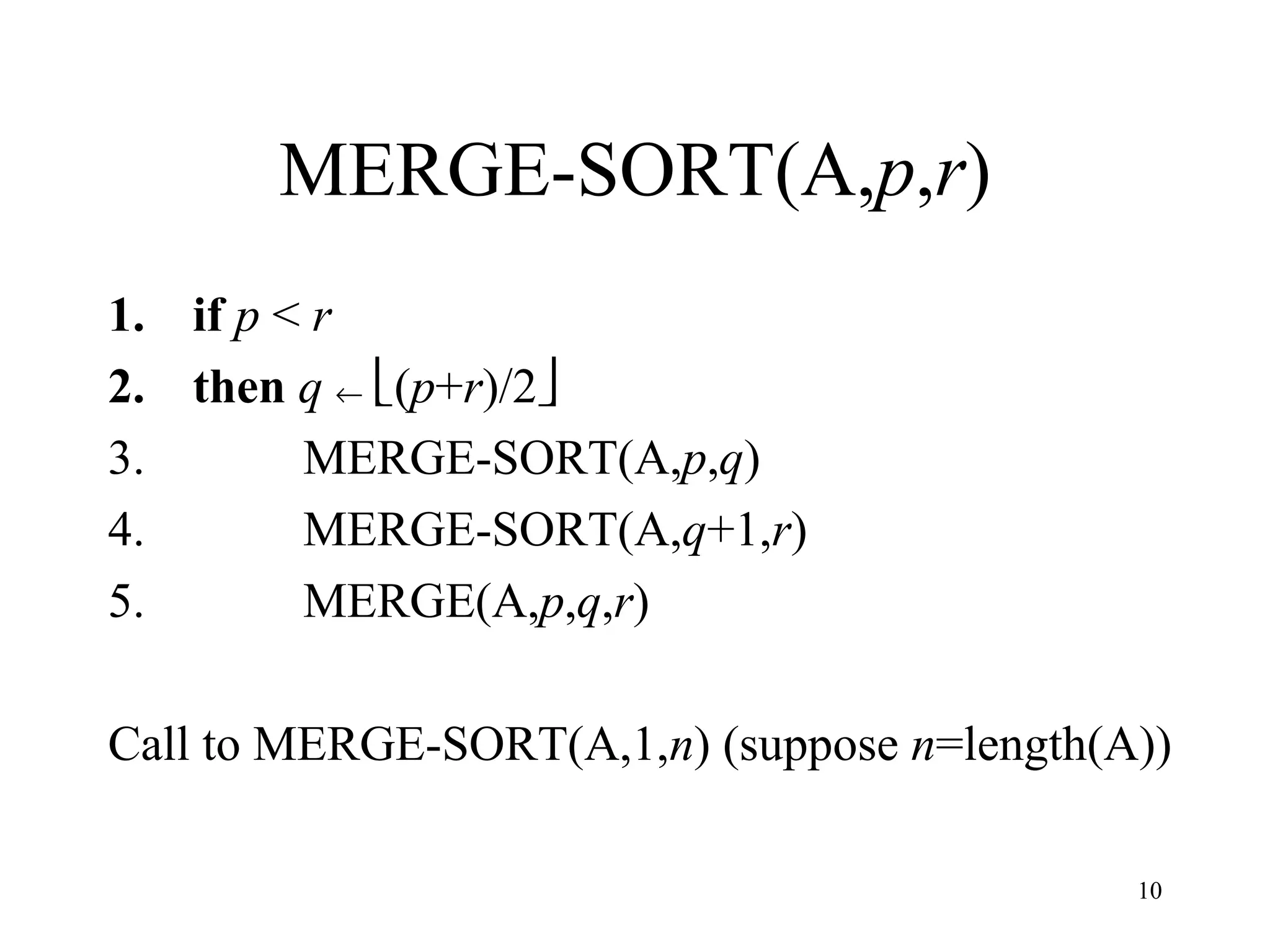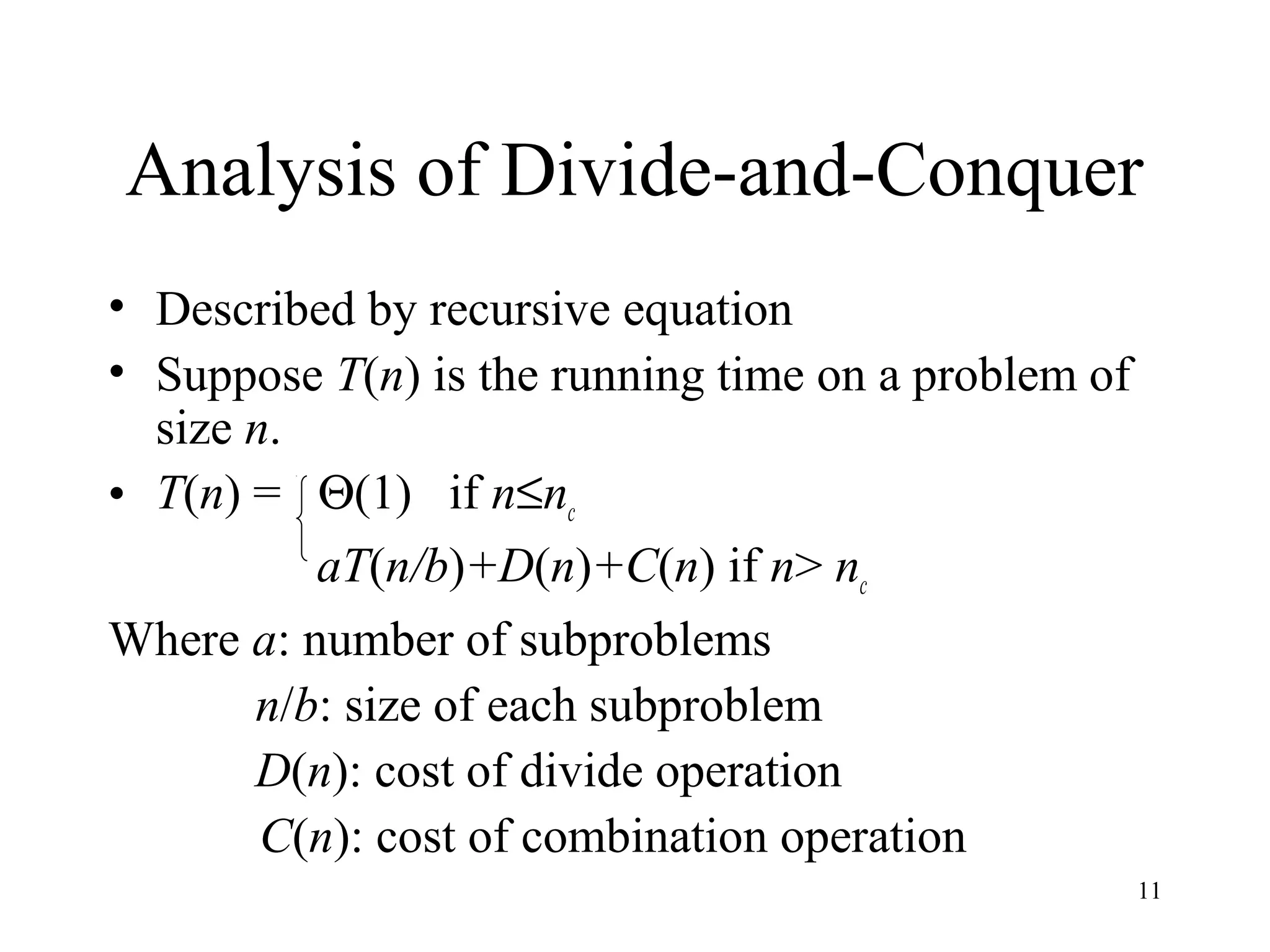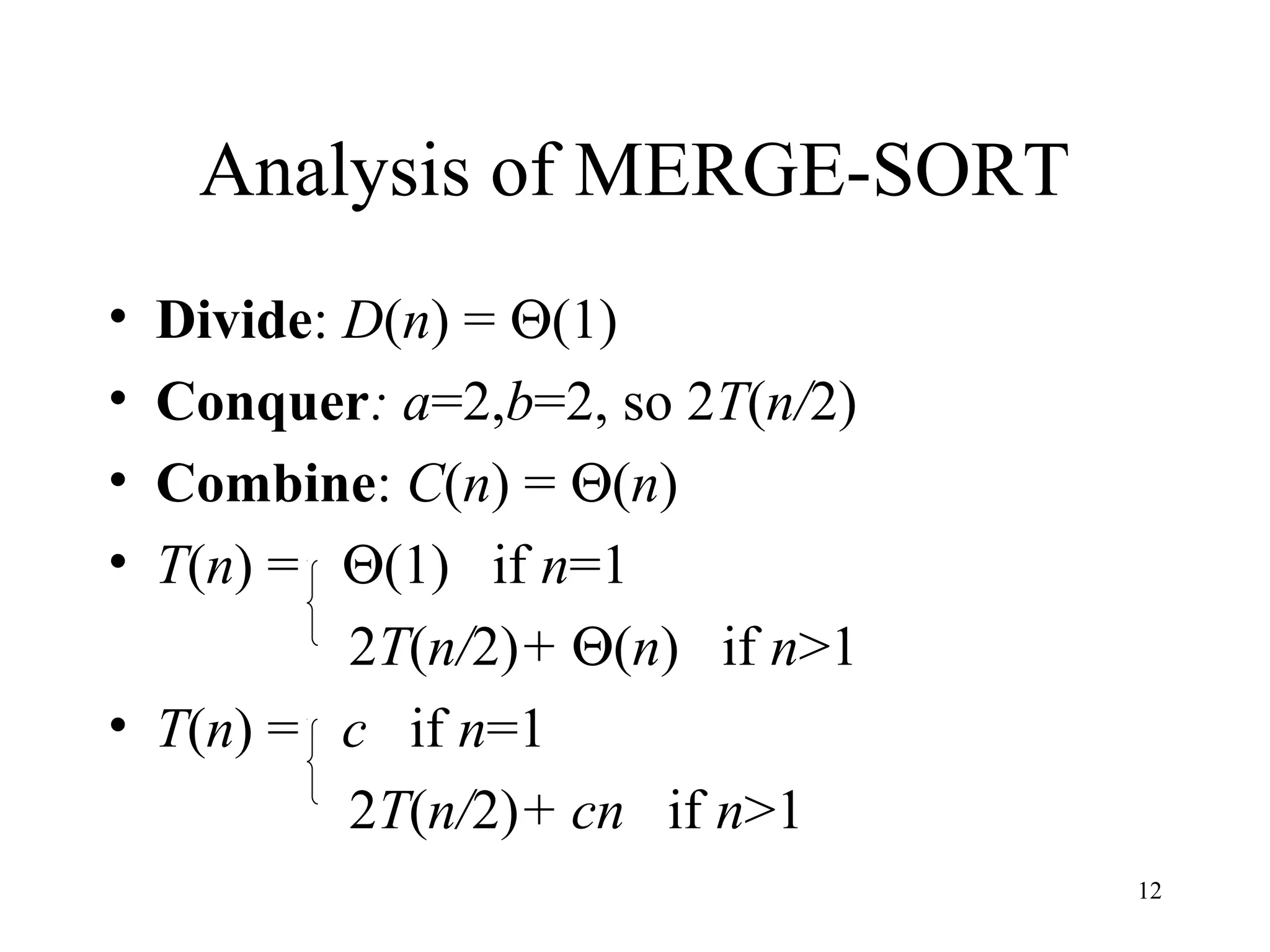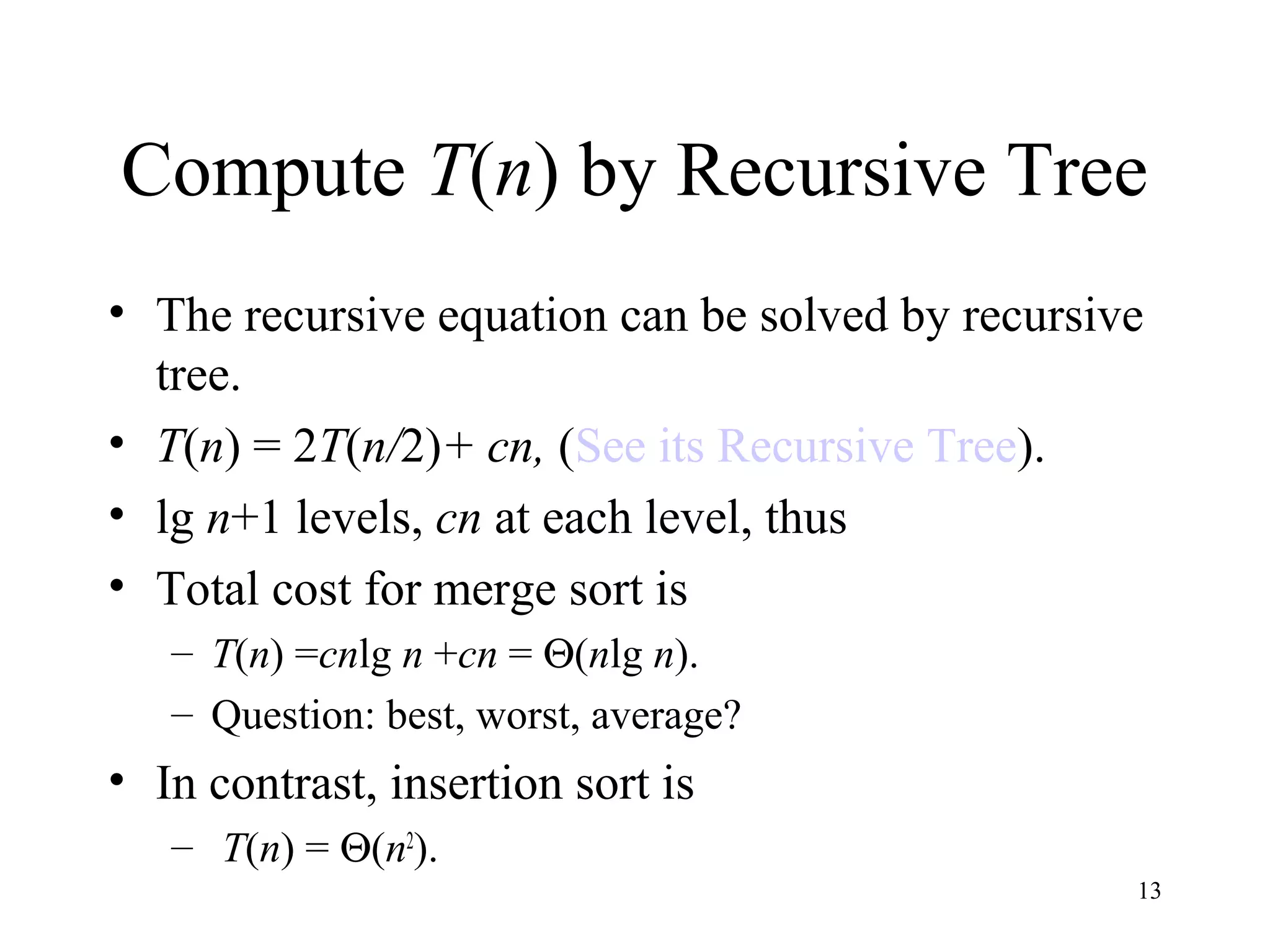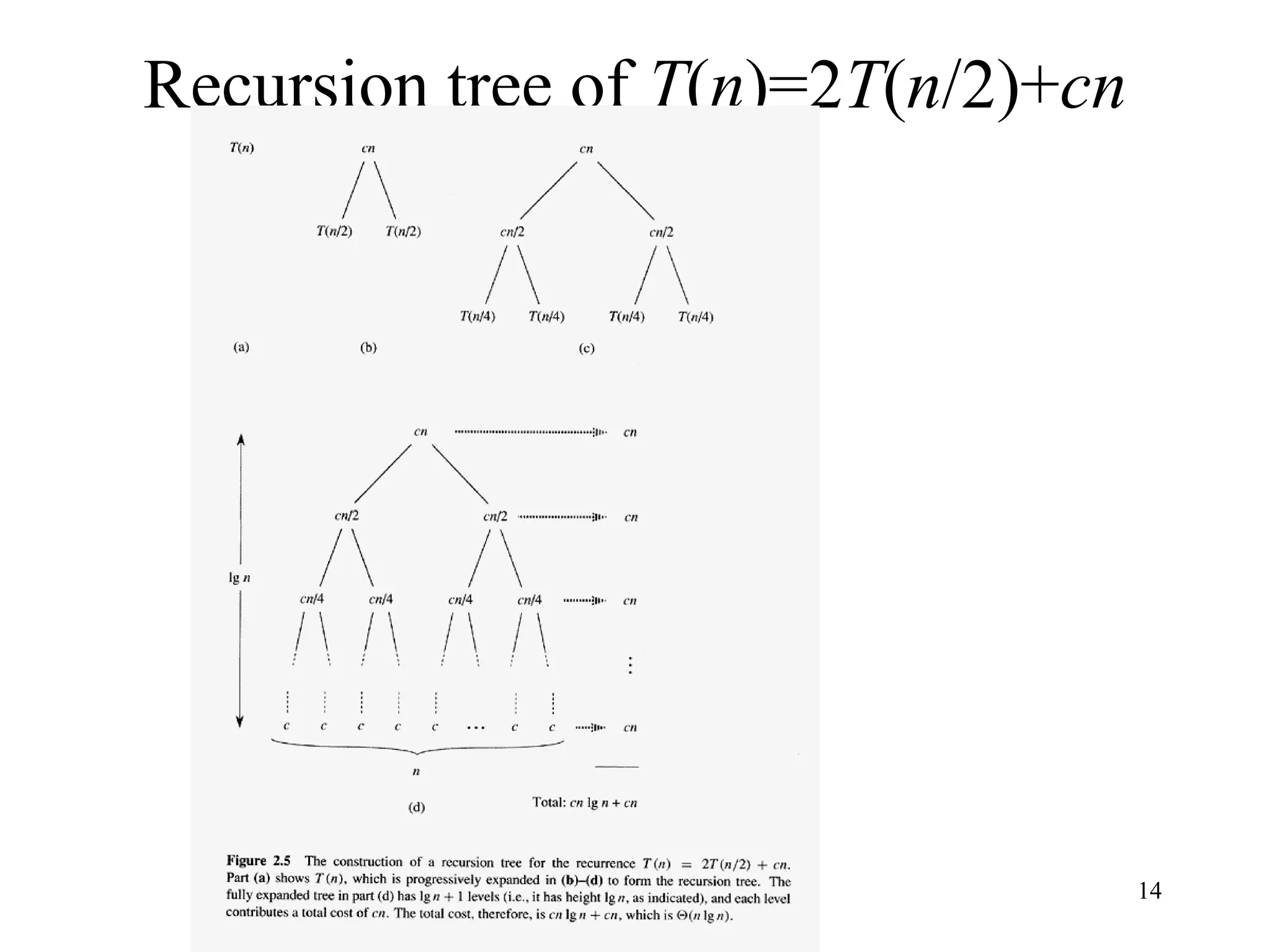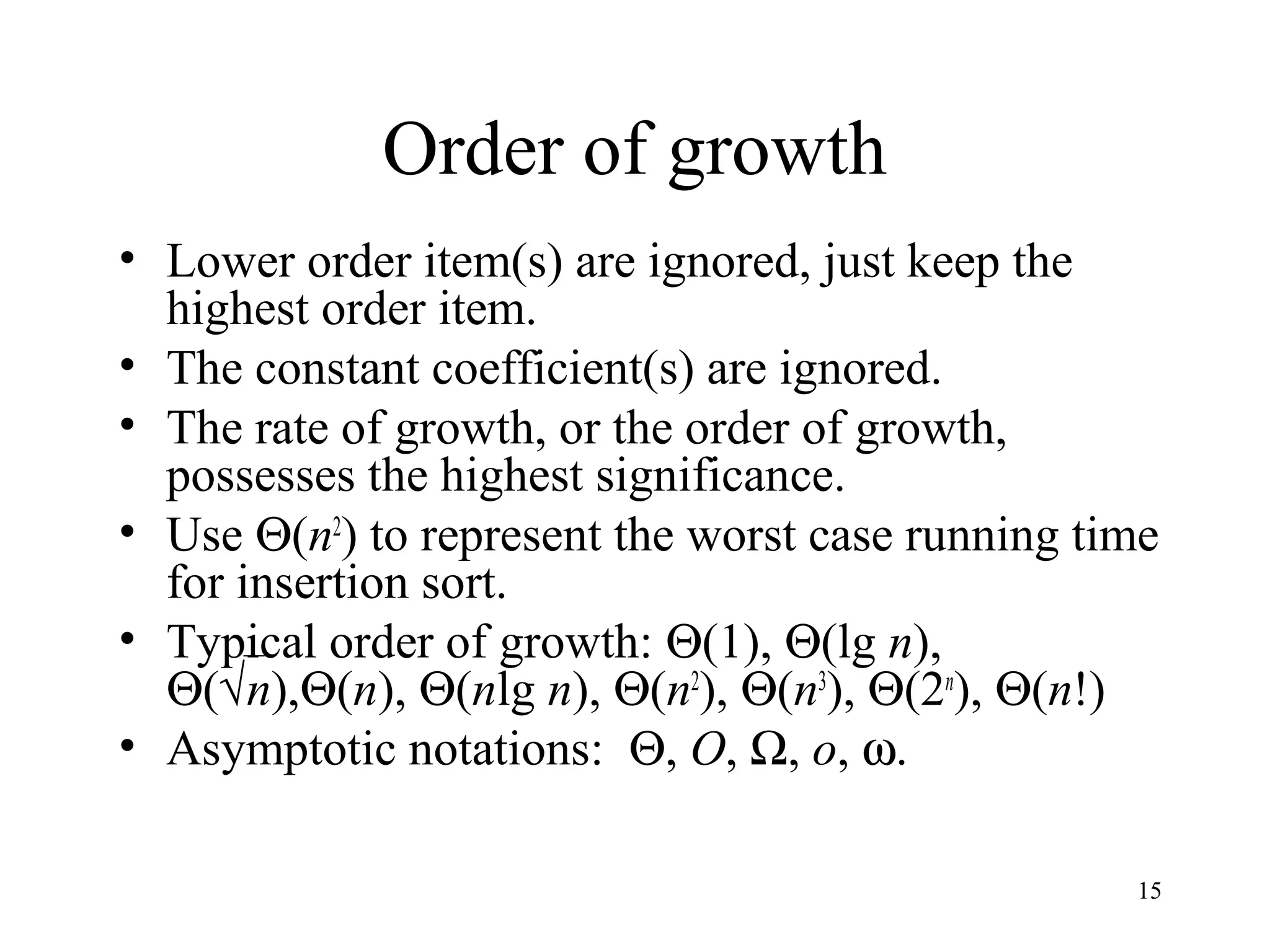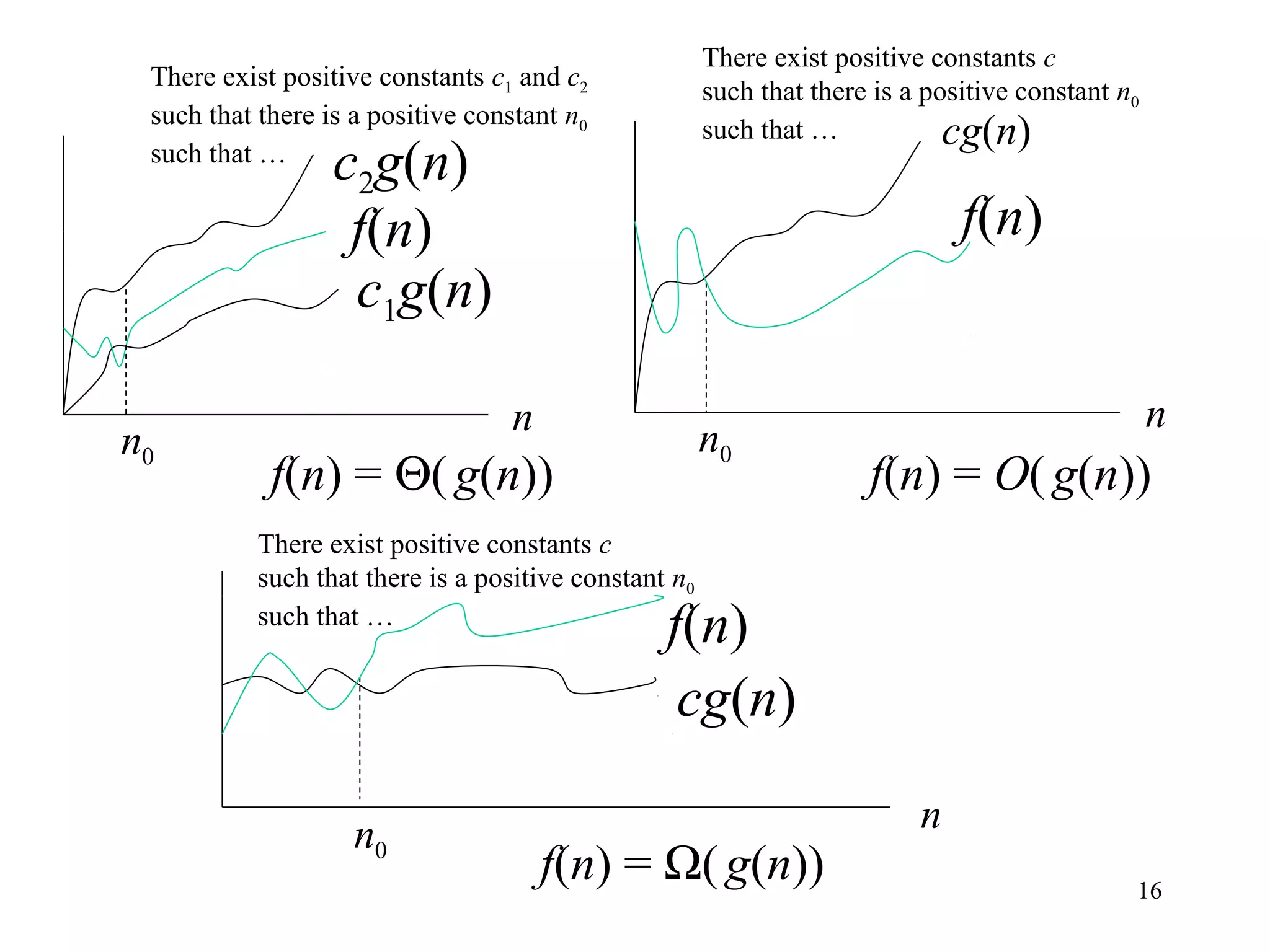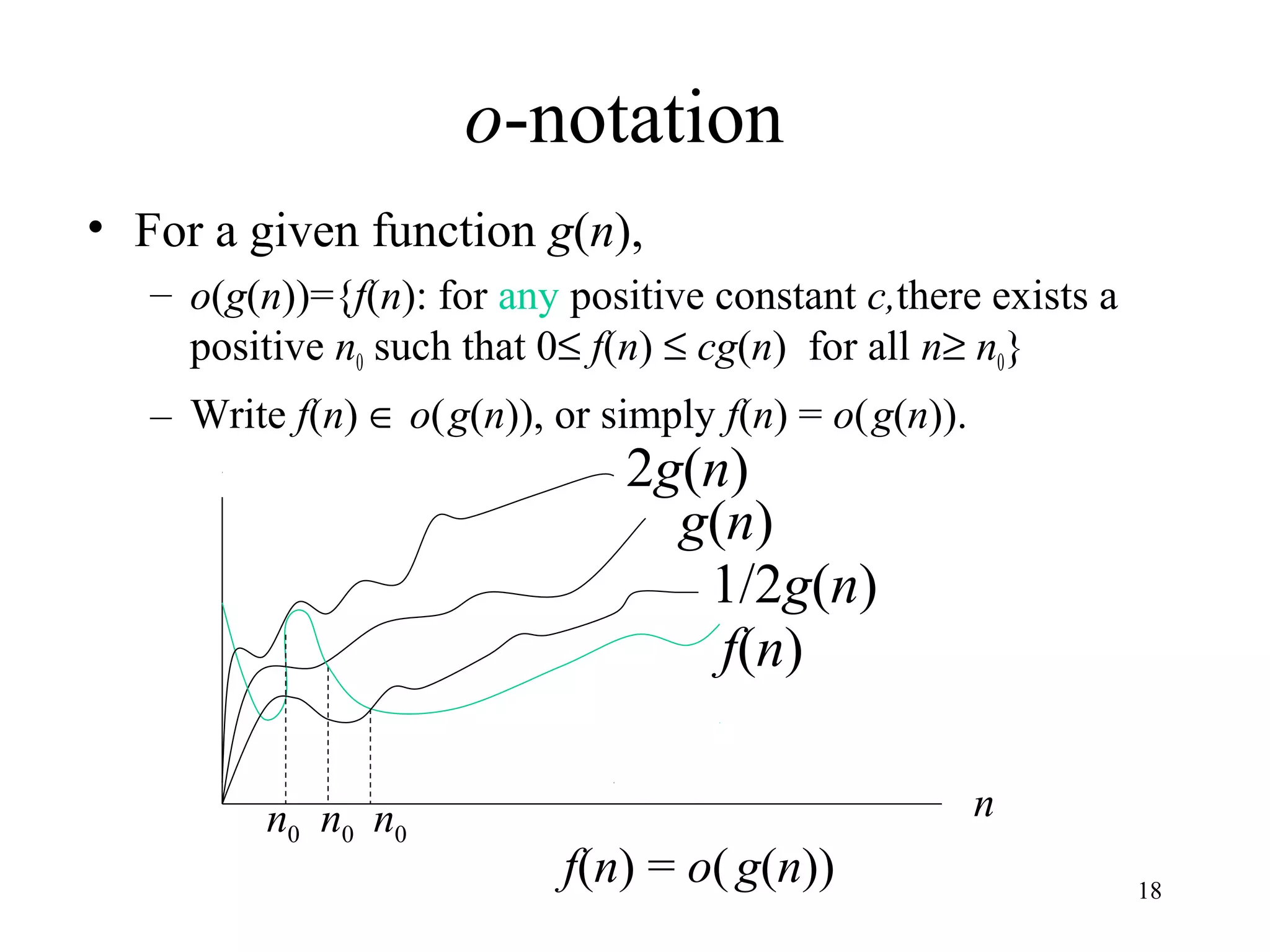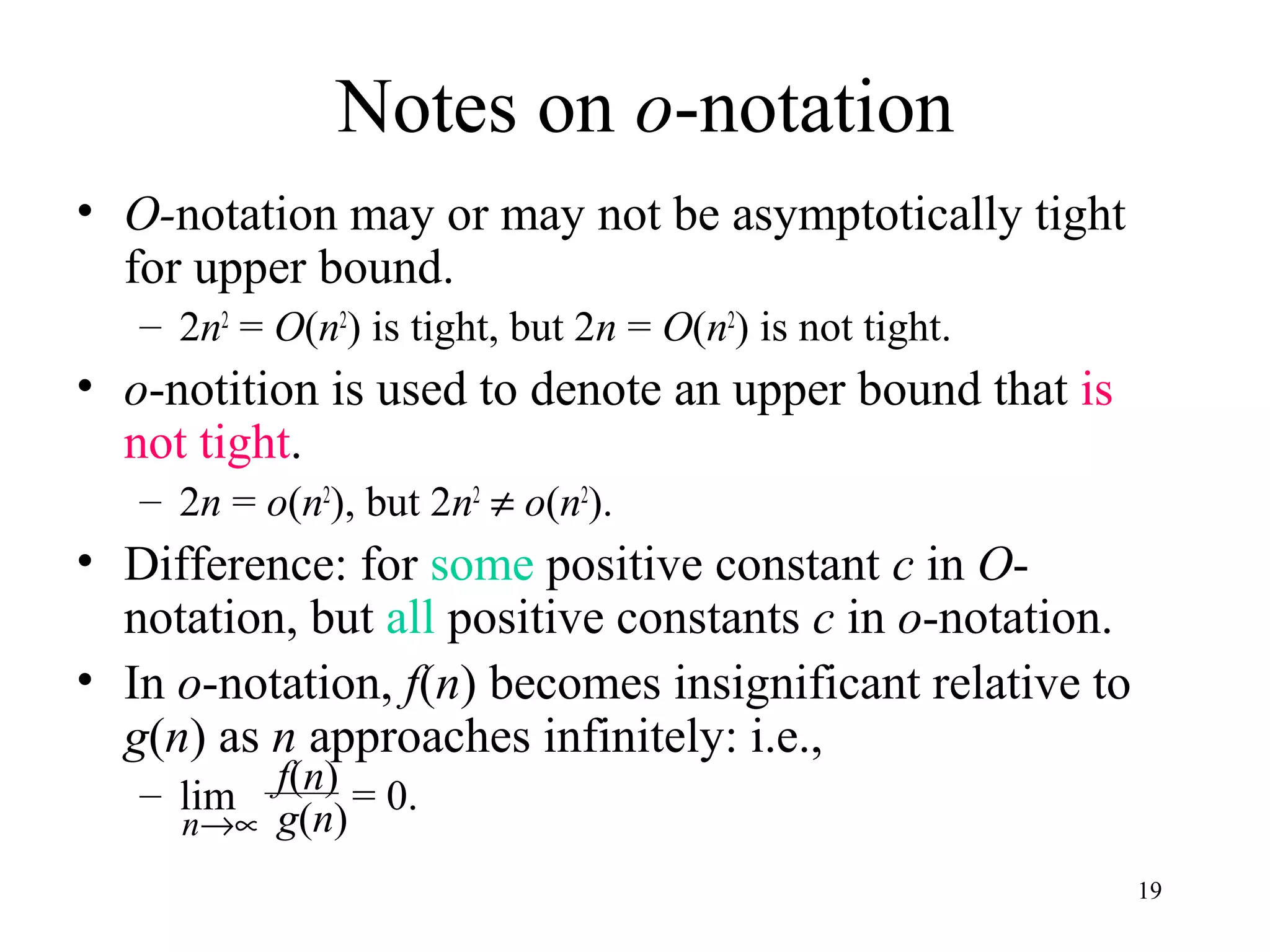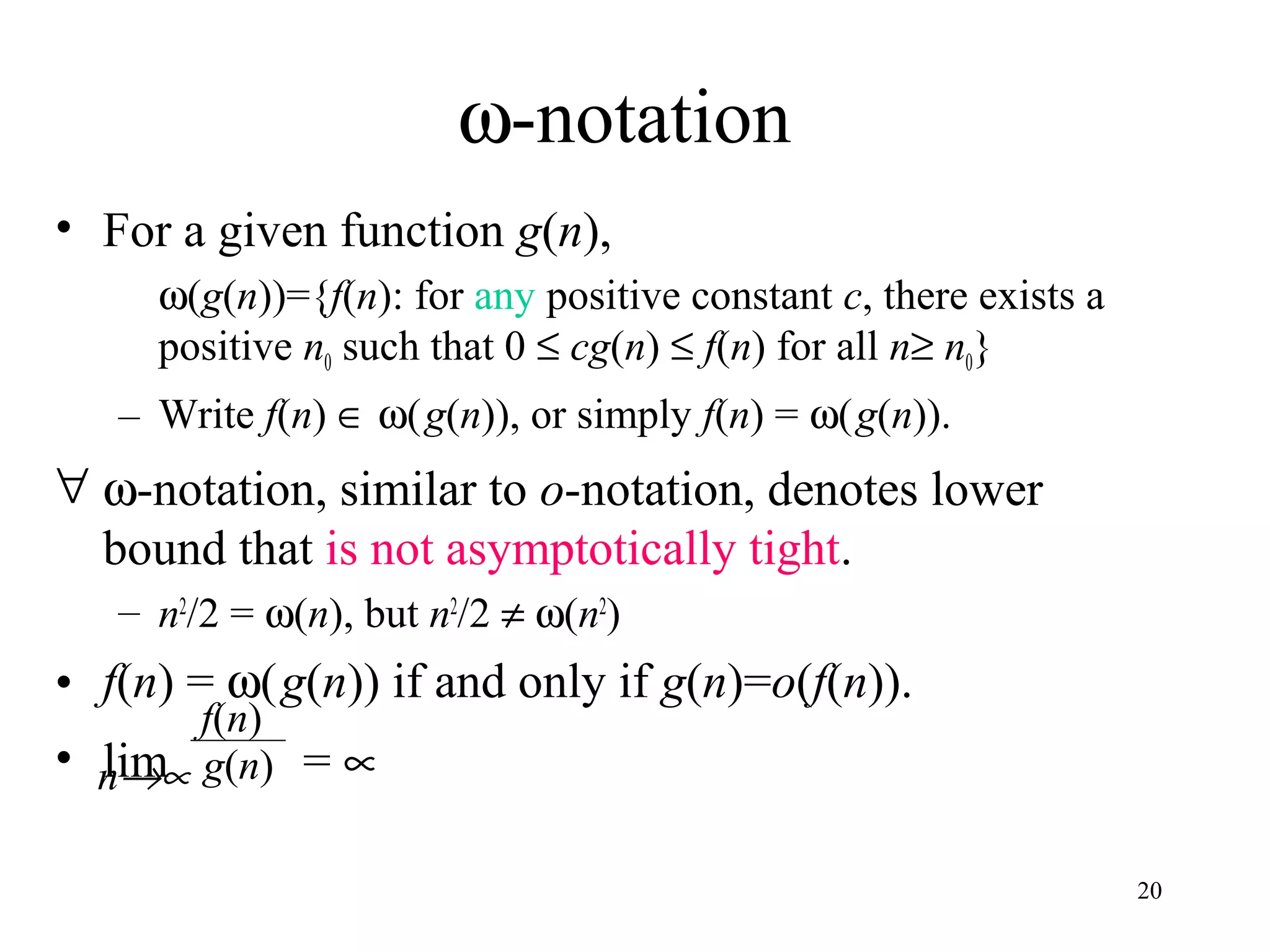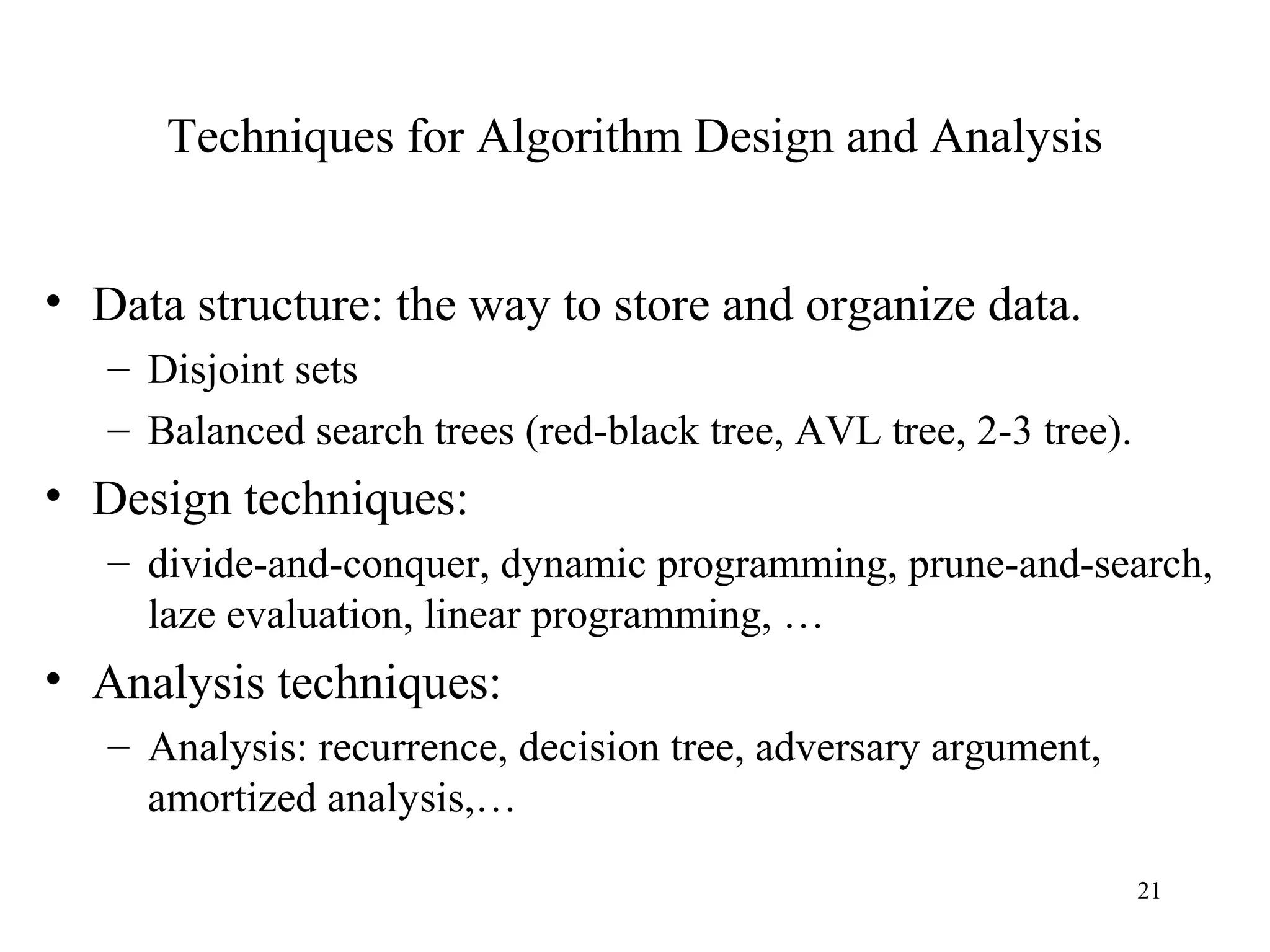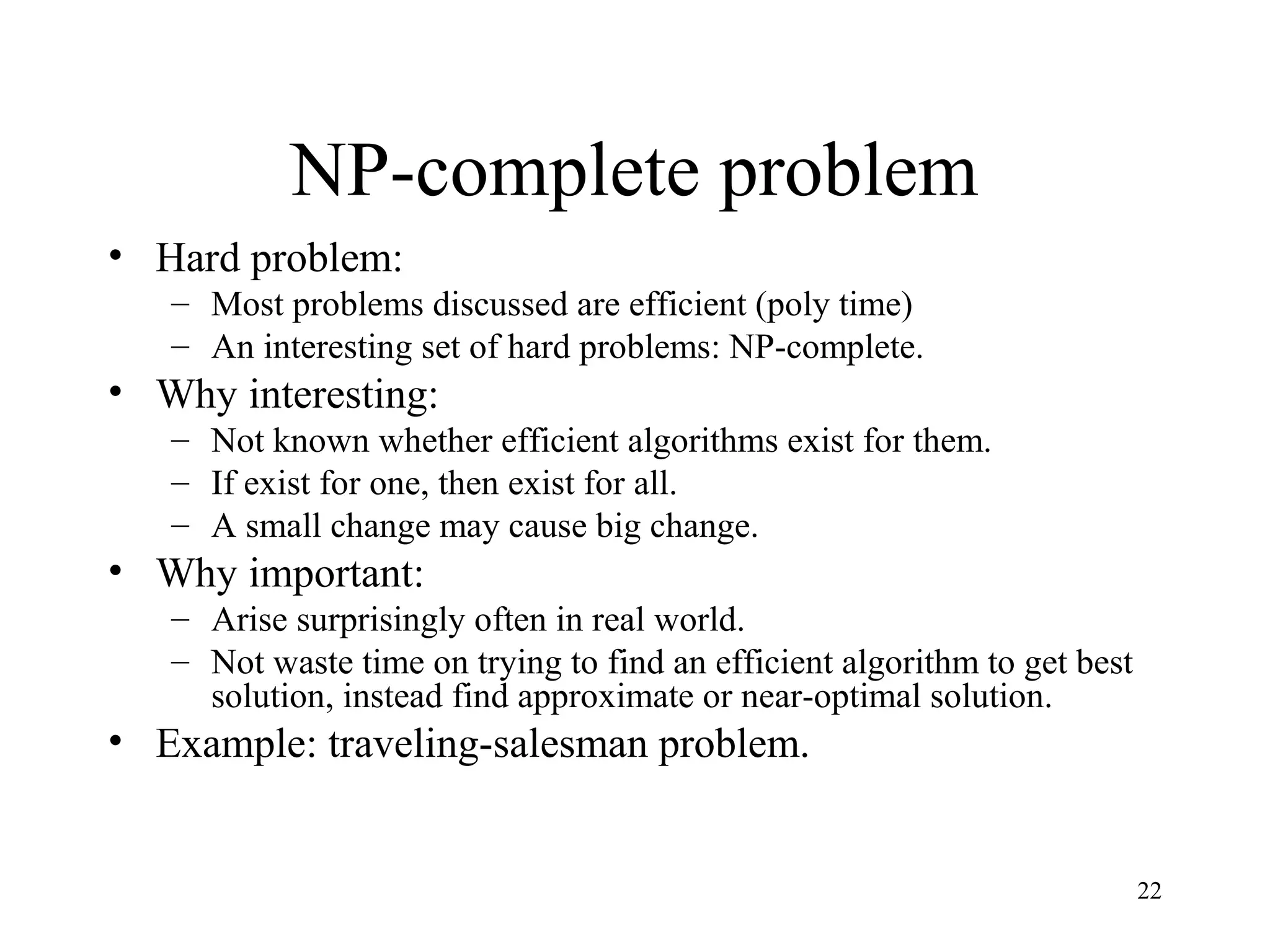This document discusses algorithm design and analysis. It introduces sorting as an example problem and compares the insertion sort and merge sort algorithms. Insertion sort runs in O(n2) time in the worst case, while merge sort runs in O(nlogn) time. It provides pseudocode for insertion sort and merge sort and analyzes their time complexities. It also covers algorithm analysis techniques like recursion trees and asymptotic notation.


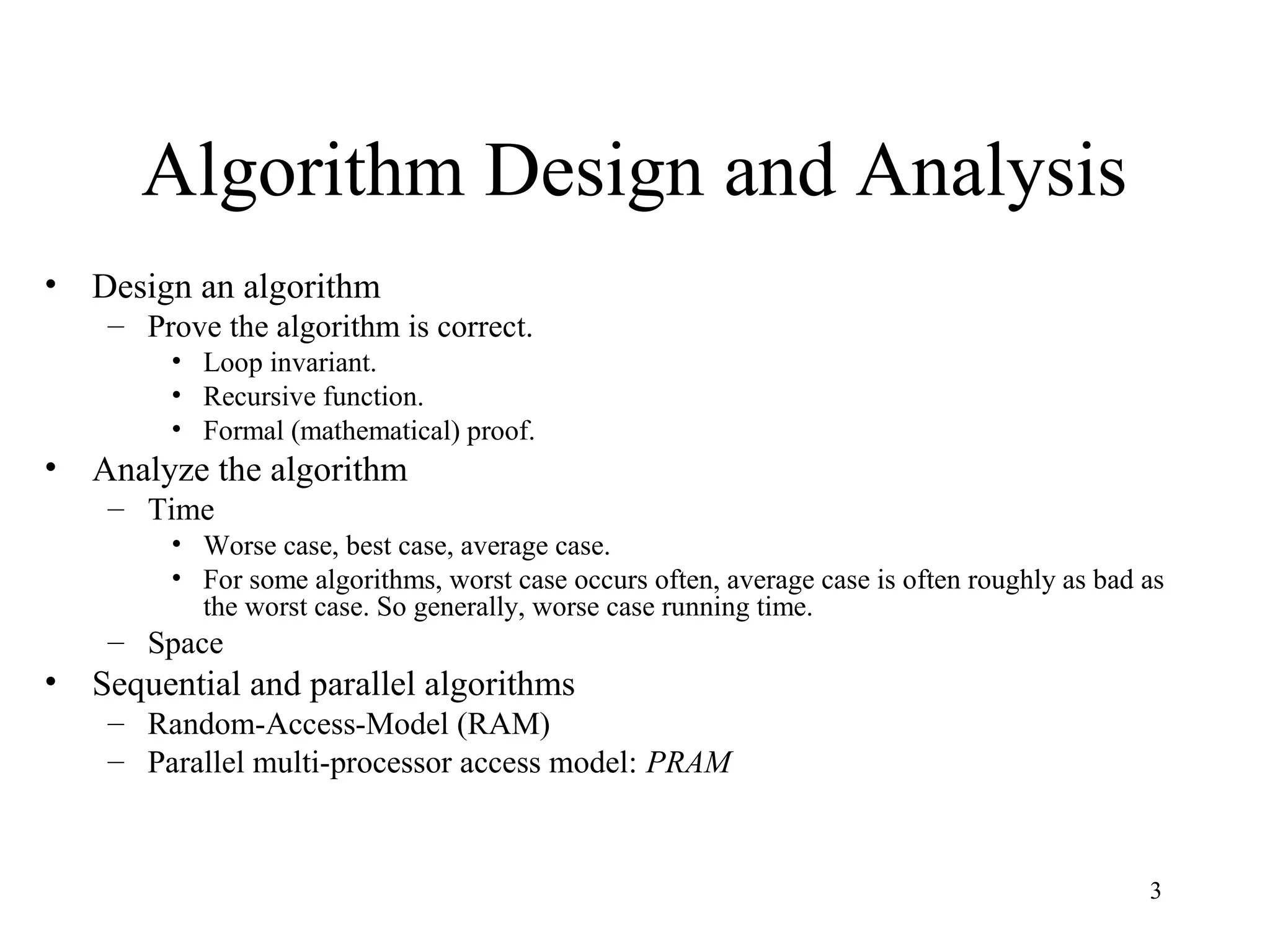
![4
Insertion Sort Algorithm (cont.)
INSERTION-SORT(A)
1. for j = 2 to length[A]
2. do key ← A[j]
3. //insert A[j] to sorted sequence A[1..j-1]
4. i ← j-1
5. while i >0 and A[i]>key
6. do A[i+1] ← A[i] //move A[i] one position right
7. i ← i-1
8. A[i+1] ← key](https://image.slidesharecdn.com/introduction-130920031122-phpapp01/75/Introduction-4-2048.jpg)
![5
Correctness of Insertion Sort Algorithm
• Loop invariant
– At the start of each iteration of the for loop, the
subarray A[1..j-1] contains original A[1..j-1] but in
sorted order.
• Proof:
– Initialization : j=2, A[1..j-1]=A[1..1]=A[1], sorted.
– Maintenance: each iteration maintains loop invariant.
– Termination: j=n+1, so A[1..j-1]=A[1..n] in sorted
order.](https://image.slidesharecdn.com/introduction-130920031122-phpapp01/75/Introduction-5-2048.jpg)
![6
Analysis of Insertion Sort
INSERTION-SORT(A) cost times
1. for j = 2 to length[A] c1 n
2. do key ← A[j] c2 n-1
3. //insert A[j] to sorted sequence A[1..j-1] 0 n-1
4. i ← j-1 c4 n-1
5. while i >0 and A[i]>key c5 ∑j=2
n
tj
6. do A[i+1] ← A[i] c6 ∑j=2
n
(tj–1)
7. i ← i-1 c7 ∑j=2
n
(tj–1)
8. A[i+1] ← key c8 n–1
(tj is the number of times the while loop test in line 5 is executed for that value of j)
The total time cost T(n) = sum of cost × times in each line
=c1n + c2(n-1) + c4(n-1) + c5∑j=2
n
tj+ c6∑j=2
n
(tj-1)+ c7∑j=2
n
(tj-1)+ c8(n-1)](https://image.slidesharecdn.com/introduction-130920031122-phpapp01/75/Introduction-6-2048.jpg)
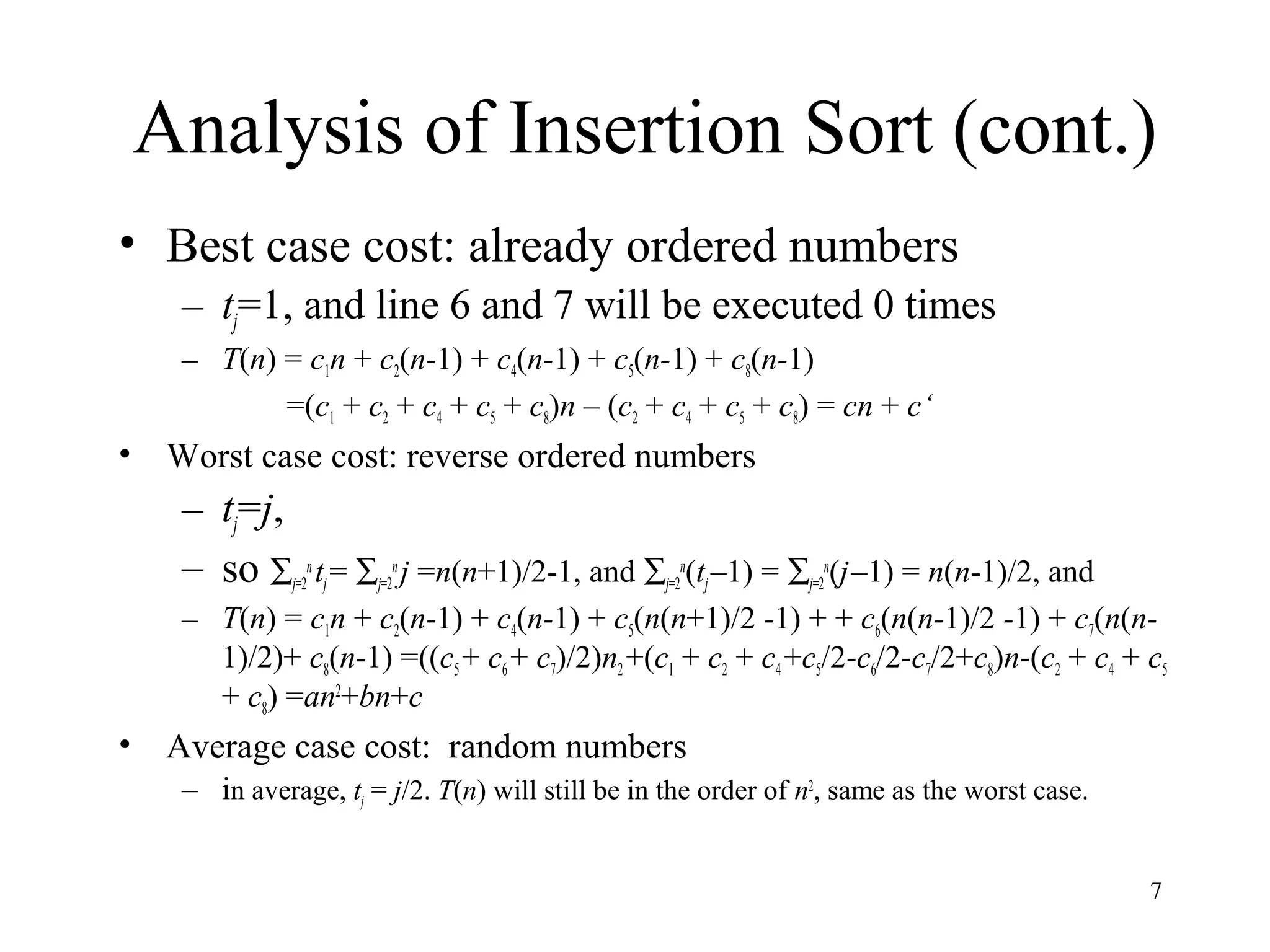
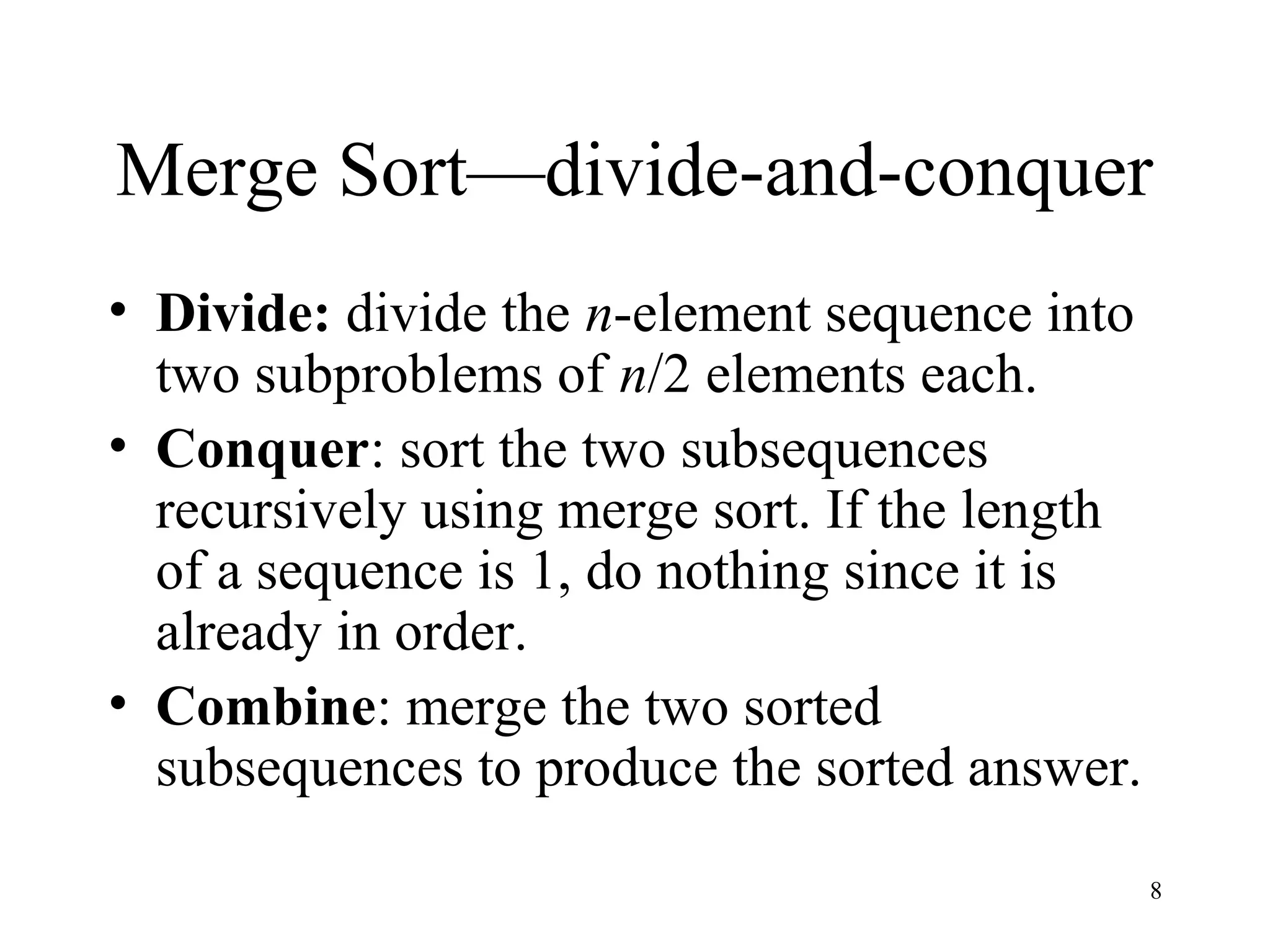
![9
Merge Sort –merge function
• Merge is the key operation in merge sort.
• Suppose the (sub)sequence(s) are stored in
the array A. moreover, A[p..q] and
A[q+1..r] are two sorted subsequences.
• MERGE(A,p,q,r) will merge the two
subsequences into sorted sequence A[p..r]
– MERGE(A,p,q,r) takes Θ(r-p+1).](https://image.slidesharecdn.com/introduction-130920031122-phpapp01/75/Introduction-9-2048.jpg)
